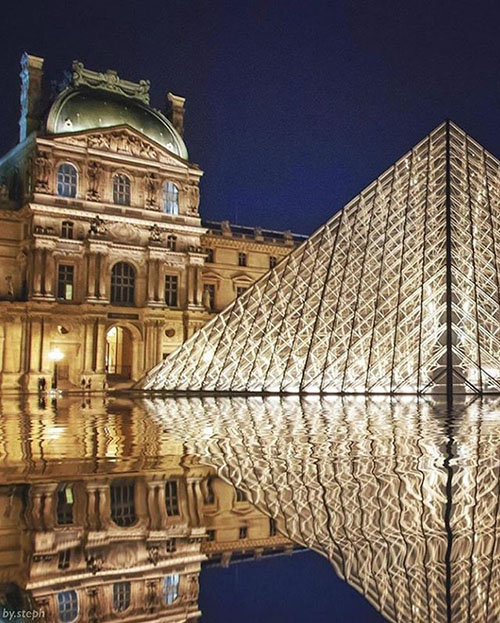
Visiting the world online museums – The Louvre
ArtWizard 06.04.2020
We believe art is bringing consolation and joy in difficult times. As an active art supporter, ArtWizard is starting a series of articles about the world museums that you can visit online. We will present them one by one as each one of them has its own particularities and ways to exhibit works online. This week read about “The Louvre”/ Le Louvre.
As the Louvre Museum, Tuileries Garden and Cour Carrée remain closed until further notice, the Louvre is one of the world museums that are fast adapting their way of showing some of the world's masterpieces of art to the present moment by opening their digital doors and inviting the world to continue exploring their extraordinary collections.
Due to the vast amount of works and galleries at the Louvre, the online tour can be explored by the art lovers in selected galleries that are part of the permanent collection of the Louvre that is now open for virtual tours. The Louvre offers its first digital visit at the Petite Gallerie, where the visitors can find an exhibition named “The Advent of the Artist” /“Figure d’Artiste”.
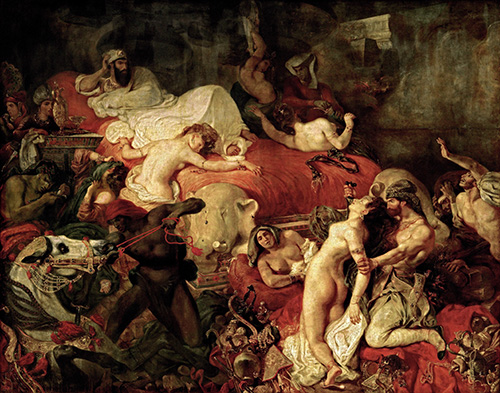
Eugène Delacroix, La Mort de Sardanapale, 1827
The walk around the Petite Gallerie is composed as a real virtual walk, where the visitor can see the real rooms and galleries of the Louvre starting from the front door and can virtually walk around the walls and admire the works exhibited there is an amazing 360 degrees experience. Each work can be approached as if the visitor approaches physically and augmented so that it gives a very realistic and high-quality image experience. As the visitor admires the artwork from a close distance, it can also be augmented virtually as an image but also as an explanation that is related to the work. The virtual walk gives a very close to the real virtual experience that not all online galleries and museums can provide. The Petite Gallerie opens the exhibition “The Advent of the Artist” on the 25th of September 2019 and is devoted to the genius painters of the Renaissance.
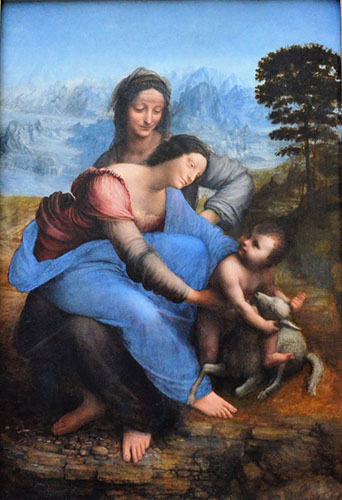
Léonard de Vinci, La Vierge, l’enfant Jésus et sainte Anne, entre 1500 et 1515
The meaning behind the exhibition is to show that, during the Renaissance the artists asserted their independence and demanded recognition as creators in their own right. Yet the advent of the artist had been long-awaited. The exhibition shows the transition from the typically anonymous craftsman of the classical period to the artist of the Renaissance that became so popular at the time that was compared to a hero of novels and legends.
The virtual tour walks around four rooms where are exhibited forty artworks from the Louvre’s eight curatorial departments alongside extracts from literature, with the aim of tracing the emergence and recognition of the artist from Antiquity to the 19th century. Close to each artwork, the virtual visitor can see and read an augmented version of the text that accompanies the artwork, thus making an invaluable experience, at times even better than the one that can be made in person, skipping the crowds and from the comfort of the home atmosphere. It can go back and forth around the rooms as well using the virtual tour functionalities.
On the virtual tour, the visitors would admire one of the masterpieces of the Louvre, and among the most famous paintings Albrecht Dürer’s Portrait of the Artist Holding a Thistle (1493), that appears alongside Rembrandt’s Self-Portrait with Easel (1660), among others.
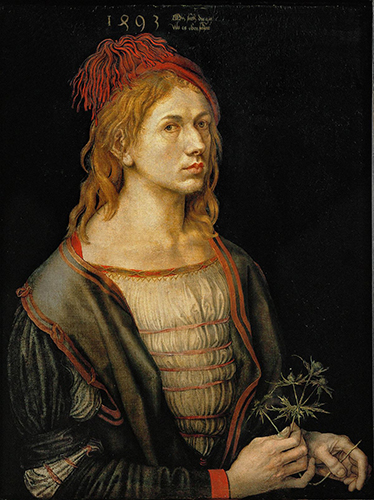
Albrecht Dürer, Autoportrait ou Portrait de l'artiste tenant un chardon, 1493
As presented in the Louvre, the rest of the exhibition is divided in five parts, that aims to show how art history has been developed:
Signatures
It is known that Greeks and Romans used the same term for "Аrtist" and "Craftsman": “Tekhnitès” in Greek and “Artifex” in Latin. Until the Renaissance, the craftsman was not considered an independent creator. However, from Antiquity, some of these professionals left anonymity and started making artworks with their names and sometimes even some biographical elements. These mentions or signatures were often complex to interpret, however, they have been used to show the significance of the artwork. With the passing of time, when there has been already an art market, some of these “craftsmen” or “artists”, started using their signature to show their art had some significance.
Self Portraits
During the Renaissance, many architects, sculptors and painters sought to free themselves from their status as craftsmen. Participating fully in humanist culture, painters, in particular, affirm this claim by developing the genre of self-portrait. Worthy of representing himself like the princes, the painter stages himself and thus delivers his reflections on the creative act. Painting and the figurative arts then pretend to compete with literature. The writers, on the other hand, sought to translate the works of art into words in a description-evocation exercise.

Rembrandt van Rijn, Autoportrait, 1660
Lives of Artists
In the Greece of the 5th and 4th centuries BC, Zeuxis and Apelles, painters, Phidias and Praxiteles, sculptors acquired recognition and prestige within the city. The fledgling art history testifies to the taste for attributing works to famous artists. In the 1st century AD, the Roman author Pliny the Elder (23-79) takes up this tradition in his Natural History. These lives of ancient artists were inspiring. The Italian painter and historian of art, Vasari (1511-1574) took up this biographical vein when he published in 1550 in Florence the lives of the most excellent architects, painters and sculptors, from Cimabue (1240-1302) to Michelangelo (1475-1564). Like their illustrious ancient predecessors, the lives of Renaissance artists, in turn, became models to imitate.
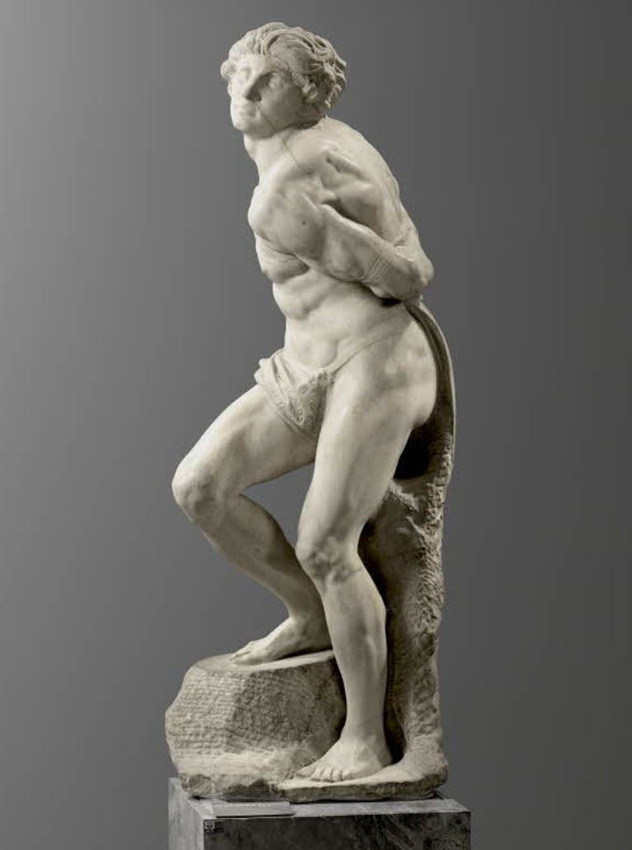
The Academy
In France, the Royal Academy of Painting and Sculpture was founded in 1648 under the protection of King Louis XIV. In the 18th century, it had its headquarters in the Louvre and there were kept its collections, in particular portraits or self-portraits of academicians. The new artistic institution responded to the desire of a few artists to free themselves from the trade corporations that enclosed painters and sculptors in a hierarchical system. Providing teaching based on drawing from the living model and the Antique, the Academy elevated painting and sculpture to the rank of noble art called liberal arts. Fifteen women were admitted there in the 17th and 18th centuries. The academicians were received after having presented a "reception piece". In 1793, the French Revolution abolished the Royal Academy and created the Academy of Fine Arts, whose influence was gradually challenged during the 19th century.
The Salon
As early as the 17th century, the Royal Academy of Painting and Sculpture organized exhibitions of works by its members. Open to the public, they were held regularly from 1737 to 1848 in the Salon Carré du Louvre, hence their name "Salons". Reflecting French artistic creation, the Salon promotes the birth of art criticism and ensures, through orders, the notoriety of artists. It offers female artists slow recognition. After the French Revolution and the disappearance of the Royal Academy of Painting and Sculpture, the Salon continues under the tutelage of the Academy of Fine Arts and is open to all artists. A major event in artistic life, its success was considerable during the 19th century. If the Salon allows the exposed artists to make a career, the "Refusals" always more numerous, contests its supremacy until obtaining power the opening of the Salon des Refusés in 1863.
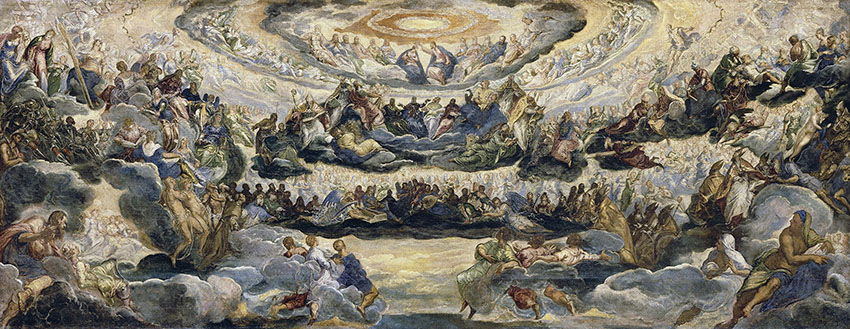
Jacopo ROBUSTI, dit TINTORET, Le Couronnement de la Vierge, dit Le Paradis, Vers 1580
Besides the exhibition of the Petite Gallerie, where the visitor will find works by Delacroix, Rembrandt, Tintoretto or Dürer in an education exposition among others, there are three other galleries at the Louvre that can be visited online. The visitors can see the Egyptian Antiquities, containing works from the period of the Pharaohs, the Louvre Medieval and the Galerie d’Apollon.
